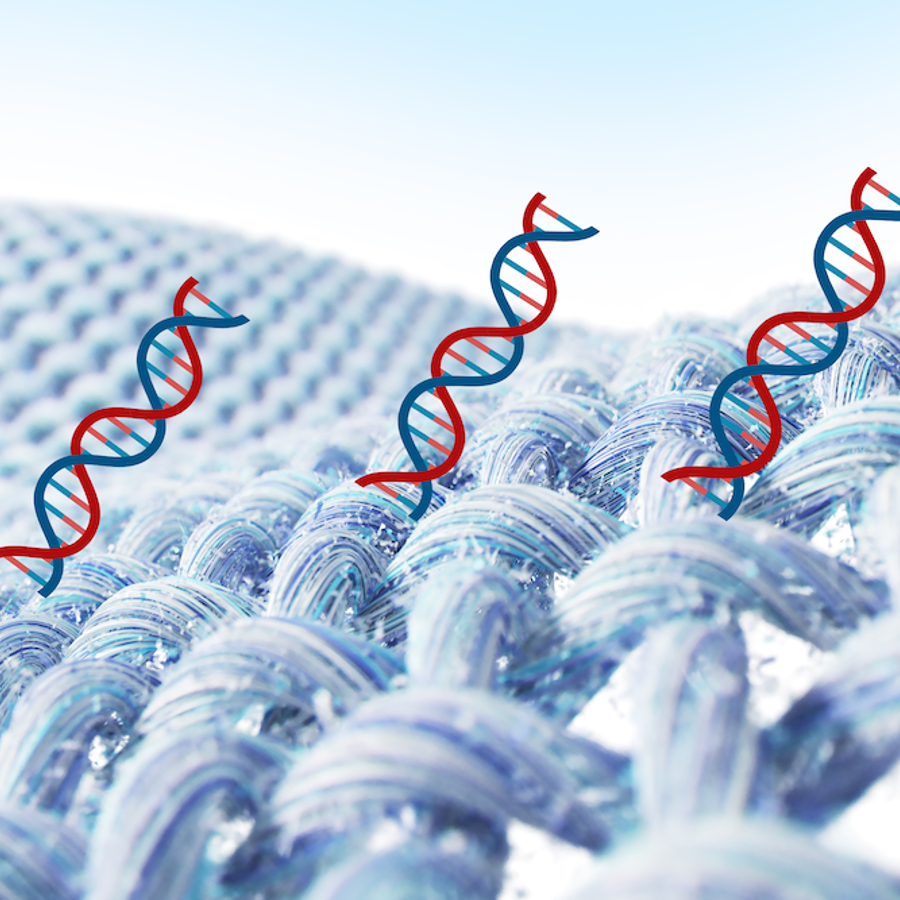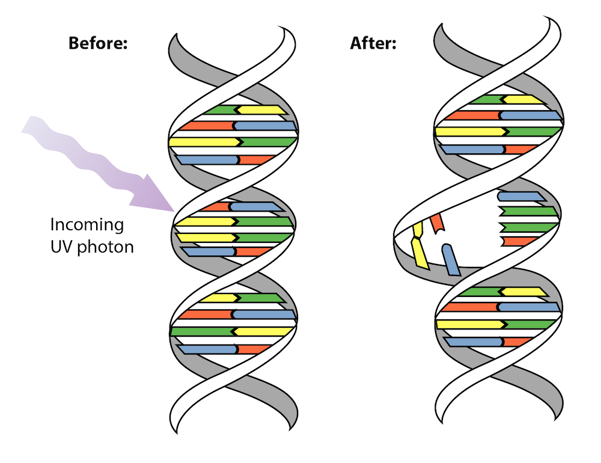
How long does DNA stay on clothes?
June 24, 2024

- Related Topics:
- Forensics,
- DNA basics
A curious adult from North Carolina asks:
"How long does DNA stay on clothes?"
DNA can stay on clothes for several days … or sometimes even decades!
The exact time depends on the type of clothes and the condition they are stored in. But before we delve into each of these factors, let’s review what DNA is and how it can get onto our clothes in the first place.
DNA is a tiny molecule in our body that is unique to each individual. It is contained inside all of our cells. We’re constantly leaving our DNA behind us. Our DNA can get onto the clothes we’re wearing through the skin cells we shed, or from body fluids such as blood, saliva, and semen.
DNA found on clothes can be from not only the wearer but also anyone who has touched the clothes. So DNA traces on clothes can often give important clues in a crime investigation. In a 1967 murder case, DNA extracted from the victim’s clothes over 3 decades after the crime occurred helped identify the suspect and solved the mystery.
So how did the killer’s DNA stay on the victim’s clothes for decades? Let’s take a look at the factors that can influence how long DNA can stay on clothes.
Why DNA breaks down
Just like foods spoil faster at hot and humid places, DNA breaks down faster in hot and humid places. If your clothes are in a warm and damp place, the heat and humidity will make the DNA molecules unstable and more likely to fall apart. Also, bacteria and fungi grow better at warm and damp places, which can also produce enzymes that break down DNA.
Sunlight also damages DNA. The UV radiation in sunlight can distort the chemical structure of DNA and lead to irreversible changes. So DNA will stay intact for longer in cool, dry, and dark places.

Material type matters!
Clothes aren’t all the same when it comes to preserving DNA. Natural fibers such as cotton and wool can absorb moisture. That higher humidity means more bacteria and fungi, which break down DNA. On the other hand, synthetic fibers such as polyester don’t absorb as much moisture, so the DNA stays intact longer.
However, one study found that DNA might get stuck to natural fibers better than synthetic fibers. More DNA on the clothes to begin with results in more DNA recovered from the clothes later1.

Other material types can also affect the stability of DNA. For example, reactive metals such as iron and copper can catalyze the formation of molecules that can lead to DNA breaks2. So DNA won’t last very long on a copper button or metal zipper.
Can DNA be washed off?
It probably isn’t a surprise to hear that washing removes DNA from clothes. But how much washing is needed to do that?
A research team from Germany found that they could still recover DNA from clothes after 10 min of rinsing under tap water3. And when they soaked clothes for an entire week in a bathtub, they could still recover DNA3! Soap didn’t make a significant difference.
Surprisingly, the same research team also found that DNA soaked in river water during the winter can stay on clothes for 2 weeks. But it only lasted 4 hours in the summer3. This is probably due to differences in water temperature and the abundance of microorganisms.
If stored well, DNA can easily last on clothes for weeks and even years! Understanding these factors and conditions that preserves DNA on clothes is crucial knowledge for investigators to better store and retrieve DNA evidence from crime scenes.

Author: Lucy Zhang
When this answer was published in 2024, Lucy was a Ph.D. candidate in the Department of Genetics, studying the roles of immune cells during heart development and congenital heart disease. She wrote this answer while participating in the Stanford at The Tech program.
 Skip Navigation
Skip Navigation
